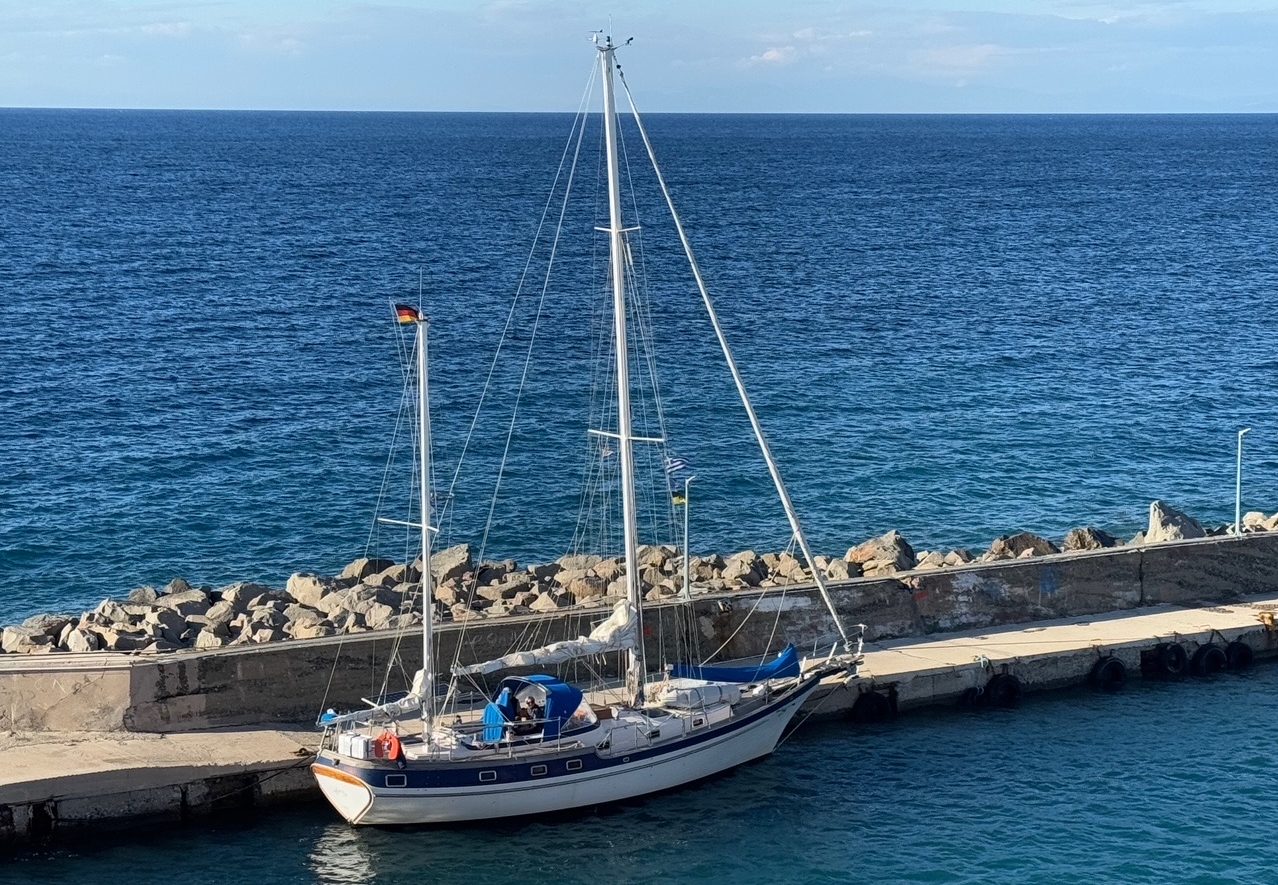
After the hustle and bustle of hundreds of sailors and surfers in Syvota and Vasiliki, we remembered the island of Kalamos. We've been there before, but in Kalamos Port and Porto Leone on the southside. At the northern coast, opposite Mytikas, there is a tiny village called Episkopi. It has a very small harbour, 5 sailing boats fit in and several fishing boats.

We actually found a place, right next to the jetty of the small ferry that comes twice a day, with never more than three people getting on or off. The village has 60 inhabitants and two tavernas, one of which is beautifully situated right on the beach, you sit under old trees 10 metres from the water: Varka, "the art of greek family cooking". That's right. The other looks more like a corrugated iron hut, but there are plenty of mezzes to go with the beer. Some sailors stay here for a fortnight. No electricity, no water, but no mooring fees either. The island is 12 kilometres long and four kilometres wide and is home to 600 people.
In Homer's time, Kalamos equipped ships for the Trojan War and was therefore prosperous. Later, in the 13th or 14th century, a rather imposing Venetian fortress was built, now in ruins of course, with old olive trees in the courtyard between the thick arches of the walls. And in the 19th century, when the Turks expelled many Greeks from the mainland, 120000 people lived here!
We took long walks, high above the sea with breathtaking views of the high bare mountains of Epirus and the village of Mytikas, which lies on a promontory opposite. We climbed around the ruined fortress and tried the beer in the two tavernas, as well as the food.
Complete peace, deep relaxation and idyll. This was not even disturbed when a Dutch boat moored right next to us, with six adults and five children aged between three years and two months on board. They were obviously relaxed too.























































































































